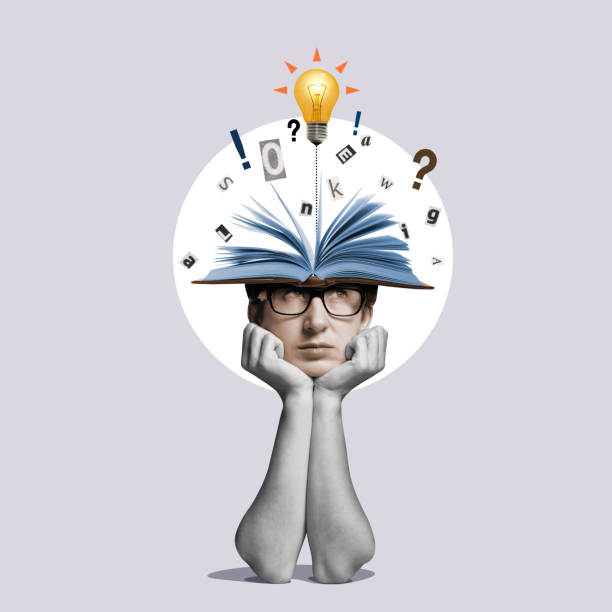Introduction
In the realm of intellectual property, patents serve as the cornerstone of innovation, providing inventors and businesses with the legal framework to safeguard their novel ideas and technological breakthroughs. Central to the patent system is the examination process, a critical phase that determines the patentability of an invention based on criteria such as novelty, non-obviousness, and industrial applicability. Historically, the examination process has been labor-intensive, time-consuming, and prone to human error, posing significant challenges for patent offices and examiners tasked with evaluating the vast volumes of patent applications. However, the advent of Artificial Intelligence (AI) has ushered in a new era of efficiency and accuracy, transforming the dynamics of the patent examination process and revolutionizing the way we assess, evaluate, and grant patents. In this blog, we explore the profound impact of AI on the patent examination process, unraveling the key features, advantages, and implications for patent offices, examiners, and innovators. We delve into the challenges posed by traditional examination methodologies, highlight the transformative capabilities of AI-driven systems, and assess the broader implications for the future of innovation and intellectual property protection. Additionally, we shed light on the ethical considerations and potential challenges associated with the integration of AI in the patent examination process, navigating the complex interplay between technology, legal frameworks, and ethical governance in the pursuit of a dynamic and resilient innovation landscape.

Challenges in Traditional Patent Examination: Manual Processes and Limitations
The traditional patent examination process has long been characterized by manual review processes, extensive paperwork, and subjective decision-making, leading to inefficiencies, delays, and potential inconsistencies in the evaluation of patent applications. Patent examiners have traditionally relied on manual searches of prior art, complex legal analysis, and subjective judgment to assess the novelty and inventiveness of patent applications, often encountering challenges such as:
- Information Overload: The exponential growth of patent databases and the proliferation of global patent filings have led to an overwhelming volume of prior art, making it increasingly challenging for examiners to conduct comprehensive searches and identify relevant references within a reasonable timeframe.
- Subjectivity and Inconsistencies: The subjective nature of human decision-making has led to inconsistencies in the evaluation of patent applications, creating uncertainties regarding the standard of patentability and the enforceability of granted patents across different jurisdictions and legal frameworks.
- Time-Intensive Processes: The manual review of patent applications and prior art references has proven to be time-consuming, often leading to significant delays in the examination process and prolonging the time-to-market for inventors and businesses seeking patent protection for their innovations.
- Limited Analytical Capabilities: Traditional examination methodologies have been limited in their analytical capabilities, often failing to uncover subtle nuances, technical intricacies, and interrelated concepts within complex patent applications, thereby impacting the accuracy and reliability of examination outcomes.
The integration of AI in the patent examination process has addressed these inherent challenges, leveraging the power of machine learning, natural language processing, and data analytics to streamline and optimize the evaluation of patent applications.
The Role of AI in Patent Examination: Unleashing Efficiency and Accuracy
AI has emerged as a transformative catalyst in the patent examination process, offering a range of advanced features that redefine the dynamics of examination, decision-making, and patentability assessment. Some of the key features of AI-driven patent examination systems include:
Natural Language Processing (NLP)
AI-powered examination systems leverage advanced NLP capabilities to analyze and interpret complex patent language, technical terminology, and legal frameworks embedded within patent applications. By deciphering the nuances of language and context, these systems can extract key concepts, identify relevant prior art, and assess the patentability of inventions with a high degree of precision and accuracy.
Machine Learning and Predictive Analytics
By integrating machine learning and predictive analytics, AI-driven examination systems can analyze vast volumes of patent data, identify patterns, and predict potential outcomes based on historical precedents and industry-specific trends. Through iterative learning processes, these systems continuously refine their analytical models, enhancing the efficiency and accuracy of patent examination over time.
Image and Design Recognition
AI-powered examination systems are equipped with image and design recognition capabilities, enabling the analysis and assessment of visual elements within patent applications, particularly in fields such as industrial design and mechanical engineering. By deciphering design specifications, technical drawings, and visual representations, these systems facilitate a comprehensive evaluation of design patents, enabling examiners to assess the uniqueness and novelty of visual innovations with unprecedented precision and insight.
Prior Art Identification and Semantic Analysis
AI-driven examination systems facilitate advanced prior art identification and semantic analysis, enabling examiners to conduct comprehensive searches, identify relevant references, and assess the scope of prior disclosures in relation to the novelty and inventiveness of patent applications. By mapping the semantic landscape of prior art references, these systems uncover hidden connections, thematic relationships, and conceptual overlaps, providing examiners with comprehensive insights that inform their decision-making processes and patentability assessments.
Decision Support and Automated Processing
AI-driven examination systems provide decision support and automated processing capabilities, enabling examiners to streamline administrative tasks, prioritize patent applications, and focus on complex analytical tasks that require human judgment and expertise. By automating routine processes and administrative workflows, these systems optimize the efficiency and productivity of examiners, expediting the examination process and reducing the backlog of pending patent applications within patent offices and regulatory agencies.
By leveraging these advanced features, AI-driven patent examination systems have redefined the landscape of patent evaluation, empowering examiners to navigate the complexities of patent language, prior art references, and legal frameworks with unparalleled efficiency, accuracy, and strategic foresight.
Implications for Patent Offices and Examiners: Streamlining the Examination Process
The transformative impact of AI-driven patent examination extends beyond the realm of efficiency and accuracy, influencing the strategic decision-making and operational efficiency of patent offices and examiners. These systems offer a myriad of advantages and opportunities, empowering patent offices and examiners to:
Expedite the Examination Process
AI-driven examination systems enable patent offices to expedite the examination process, reduce the backlog of pending applications, and accelerate the time-to-market for inventors and businesses seeking patent protection for their innovations. By automating routine tasks, streamlining administrative workflows, and prioritizing patent applications based on predefined criteria, these systems optimize the efficiency and productivity of examiners, fostering a culture of operational excellence and timely patent grant procedures.
Enhance the Quality of Examination Outcomes
AI-powered examination systems enhance the quality and reliability of examination outcomes by minimizing human errors, mitigating subjective biases, and ensuring consistency in the evaluation of patent applications. By leveraging data-driven insights, predictive analytics, and automated decision support, these systems provide examiners with comprehensive analytical tools and contextual information that inform their decision-making processes, enhancing the accuracy and reliability of patentability assessments and examination outcomes.
Foster Data-Driven Policy Formulation
AI-driven examination systems generate data-driven insights that inform policy formulation, regulatory governance, and strategic planning for patent offices and regulatory agencies. By analyzing examination trends, industry-specific data, and market dynamics, these systems enable stakeholders to anticipate emerging technological trends, align patent policies with industry demands, and foster a conducive environment for innovation, research, and technological development within the national and international innovation landscape.
Strengthen International Collaboration and Information Sharing
AI-powered examination systems facilitate international collaboration and information sharing among patent offices and regulatory agencies, enabling stakeholders to exchange best practices, harmonize examination standards, and streamline cross-border patent application procedures. By promoting transparency, interoperability, and knowledge exchange, these systems foster a culture of collaborative innovation, legal harmonization, and cross-jurisdictional cooperation within the global intellectual property ecosystem.
Promote Technological Advancements and Innovation
By expediting the patent examination process and enhancing the quality of examination outcomes, AI-driven examination systems promote technological advancements, innovation-driven growth, and research and development (R&D) initiatives within the national and international innovation landscape. By providing inventors and businesses with timely and reliable patent protection, these systems foster a culture of innovation, entrepreneurship, and technological advancement, positioning stakeholders for sustained success and competitive advantage in the dynamic and evolving global market.
By harnessing the capabilities of AI-driven patent examination systems, patent offices and examiners can unlock a wealth of opportunities, streamline the examination process, and establish a resilient intellectual property framework that aligns with their long-term strategic objectives and societal needs.

Ethical Considerations and Challenges in AI-Powered Patent Examination
While the integration of AI in the patent examination process presents a multitude of opportunities for efficiency and innovation, it also poses significant ethical considerations and challenges that warrant careful consideration and responsible governance. Some of the key ethical considerations associated with AI-driven patent examination include:
Transparency and Accountability
Ensuring the transparency and accountability of AI algorithms used in the examination process is critical to building trust and confidence among stakeholders. Clear documentation of algorithmic methodologies, disclosure of analytical processes, and transparent reporting of examination outcomes are essential to promote transparency, foster user trust, and uphold ethical standards in the evaluation of patent applications.
Data Privacy and Security
AI-driven examination systems rely on vast repositories of patent data, including sensitive information related to patent applications, research findings, and proprietary knowledge. Protecting the privacy and security of this data is paramount, necessitating robust data protection protocols, encryption standards, and compliance with data privacy regulations to prevent unauthorized access or data breaches.
Algorithmic Bias and Fairness
Mitigating algorithmic bias and ensuring fairness in examination outcomes is crucial to promote equitable access to patent protection and prevent discriminatory practices. AI algorithms must be developed and calibrated to minimize biases based on factors such as technology domains, geographical regions, or industry-specific preferences, ensuring that examination outcomes remain objective, unbiased, and inclusive.
Legal Compliance and Regulatory Governance
Adhering to legal compliance standards and regulatory frameworks governing patent examination is essential to ensure the ethical and legal integrity of AI-driven examination systems. Compliance with patent laws, examination guidelines, and international standards is imperative to prevent legal disputes, uphold patent validity, and foster a culture of responsible innovation and legal governance within the intellectual property ecosystem.
Intellectual Property Rights and Ownership
Addressing the complexities of intellectual property rights and ownership is essential when integrating AI-driven examination systems into the patent evaluation process. Clear guidelines and legal frameworks must be established to determine the ownership of AI-generated examination outcomes, protecting the rights of inventors, businesses, and stakeholders involved in the patent examination process.
By addressing these ethical considerations and challenges, stakeholders can foster an ethical and responsible approach to AI-powered patent examination, promoting transparency, fairness, and legal compliance in the pursuit of innovation and intellectual property protection.
The Future of AI in Patent Examination: Transformative Pathways and Emerging Trends
Looking ahead, the future of AI in the patent examination process is poised for transformative pathways and emerging trends that will redefine the dynamics of intellectual property protection and legal strategy formulation. Some of the key areas of development and future trends in AI-powered examination include:
Enhanced Cognitive Reasoning and Legal Expertise
Future iterations of AI-driven examination systems are likely to exhibit enhanced cognitive reasoning and legal expertise, enabling patent offices and examiners to assess complex patent applications, interpret intricate legal language, and make informed decisions with a high degree of precision and insight. By integrating advanced cognitive computing and legal reasoning capabilities, these systems will redefine the dynamics of patent examination, fostering a culture of legal excellence and strategic foresight within the intellectual property ecosystem.
Integration of Blockchain Technology
The integration of blockchain technology in AI-driven examination systems holds the potential to revolutionize data management, authentication, and intellectual property rights protection. By leveraging blockchain’s decentralized and immutable ledger system, stakeholders can ensure the integrity of patent data, facilitate secure transactions, and establish transparent mechanisms for verifying the authenticity and ownership of patent-related information, fostering a culture of transparency, trust, and legal governance within the intellectual property ecosystem.
Expansion of Global Patent Databases
With the globalization of the innovation landscape and the proliferation of cross-border patent filings, AI-powered examination systems are expected to expand their databases to encompass a broader spectrum of global patent repositories, regulatory frameworks, and examination guidelines. By incorporating multilingual examination capabilities and cross-jurisdictional assessments, these systems will enable patent offices and examiners to navigate international patent complexities, streamline cross-border examination procedures, and promote harmonization of patent standards within the global intellectual property ecosystem.
Integration of Predictive Analytics and Patent Forecasting
Future AI-driven examination systems are likely to integrate predictive analytics and patent forecasting capabilities, enabling patent offices and examiners to anticipate patent trends, assess technological advancements, and forecast future market dynamics. By leveraging predictive modeling and trend analysis, these systems will empower stakeholders to anticipate emerging patent challenges, align examination strategies with industry demands, and foster a culture of proactive innovation and strategic foresight within the global intellectual property landscape.
Emphasis on Responsible Legal Governance
Addressing the need for responsible legal governance and ethical awareness, future AI-driven examination systems will prioritize the development of responsible legal governance frameworks that promote transparency, fairness, and accountability in the patent examination process. By incorporating ethical guidelines, legal standards, and regulatory compliance mechanisms, these systems will foster a culture of responsible legal governance, upholding the ethical integrity of patent examination and legal strategy formulation within the dynamic and evolving innovation landscape.
By embracing these transformative pathways and emerging trends, patent offices, examiners, and stakeholders can unlock the full potential of AI-driven examination, fostering a culture of legal excellence, innovation-driven growth, and responsible legal governance that aligns with societal values and ethical principles.
Conclusion
The integration of AI in the patent examination process has redefined the dynamics of intellectual property protection and legal strategy formulation, empowering patent offices, examiners, and stakeholders to navigate the complexities of patent language, prior art references, and legal frameworks with unparalleled efficiency, accuracy, and strategic foresight. By harnessing the capabilities of AI, patent offices and examiners can unlock a wealth of opportunities, streamline the examination process, and establish a resilient intellectual property framework that aligns with their long-term strategic objectives and societal needs. While the integration of AI presents a multitude of opportunities for efficiency and innovation, it also poses significant ethical considerations and challenges that demand responsible governance and ethical awareness. By addressing these considerations, stakeholders can foster a culture of responsible innovation, legal resilience, and ethical governance, charting a course toward a future where the boundaries of legal excellence and intellectual property protection are continually pushed to new frontiers of discovery, progress, and collective growth.

